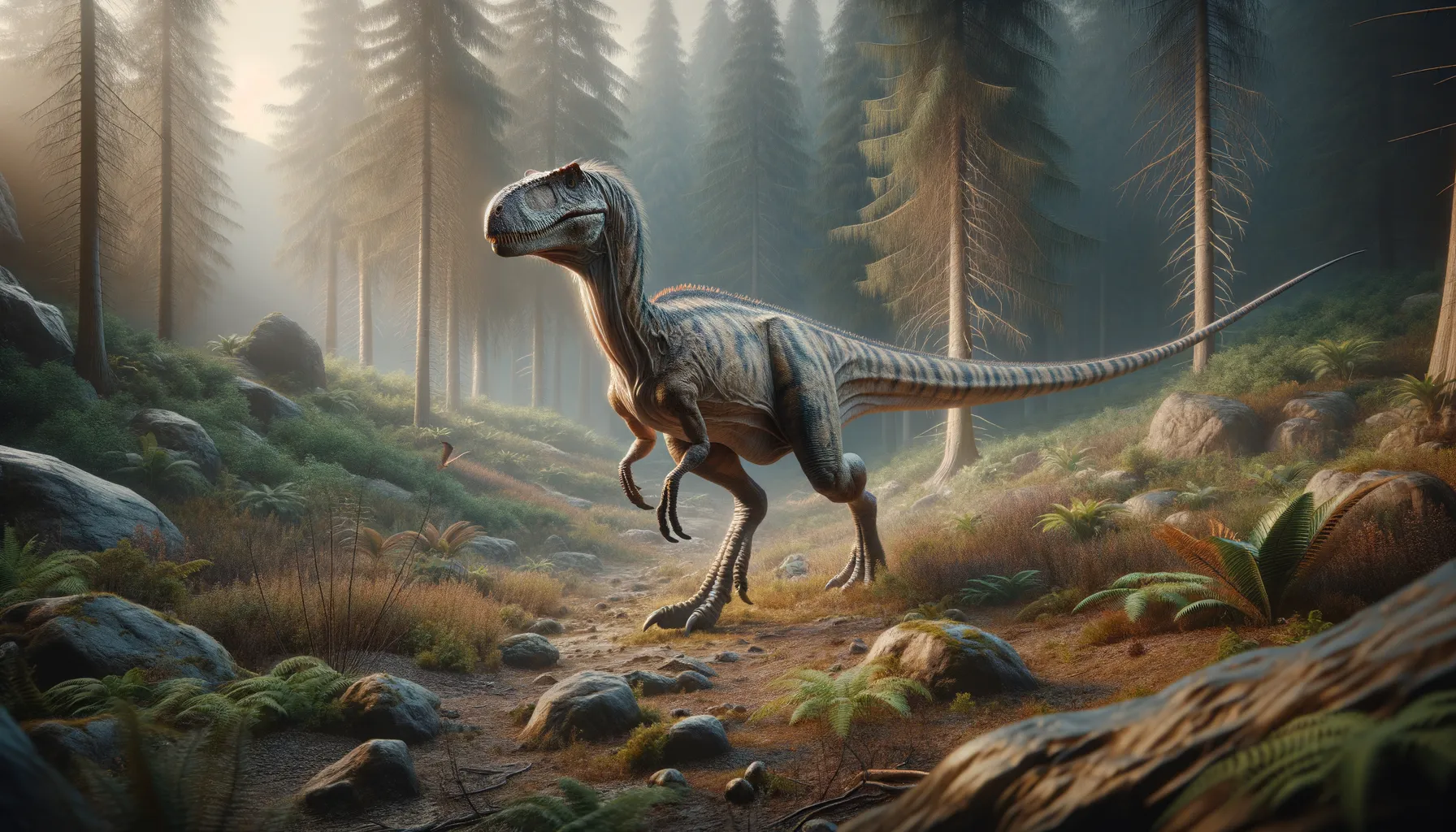
Streptospondylus
Jurassic predator with a sleek build.
Period
Jurassic
Length
Close to 6 meters (20 feet).
Height
Approximately 2.5 meters (8 feet) to the hip.
Weight
Around 500 kilograms (about 1100 pounds).
Streptospondylus was a carnivorous dinosaur that roamed the Earth during the Jurassic period. Characterized by its lean body and elongated limbs, this dinosaur was well-suited for a life of actively pursuing prey. Rediscovered and reevaluated over the years, Streptospondylus provides vital clues about theropod evolution in Europe. Its fossil remains, primarily found in France, have helped scientists piece together the history of early European theropods.
Diet
Its diet primarily consisted of smaller dinosaurs and possibly fish. As a carnivore, it likely played a crucial role in maintaining the ecological balance of its habitat.
Hunting
Streptospondylus probably hunted alone, relying on its agility to ambush or chase down prey. It would have utilized its sharp teeth and strong jaws to capture and subdue its meals.
Environmental challenges
During the Jurassic period, Streptospondylus faced a dynamic environment with changing sea levels and volcanic activity. These factors influenced the availability of food sources, prompting adaptations in hunting strategies. Predation pressure from larger carnivores also posed a challenge, necessitating keen awareness and quick reflexes for survival. Furthermore, competition with other theropods for similar prey could have been a significant challenge.
Speed
Likely moderate, as it had a lightweight build.
Lifespan
Estimated between 20 to 30 years.
First discovery
First discovered in the early 19th century in France.
Fun Facts
- Streptospondylus was a carnivorous dinosaur that lived approximately 160 million years ago during the Jurassic period.
- This dinosaur's name means 'reversed vertebrae', referring to its unique spinal structure.
- It was discovered in France, making it one of the early dinosaur finds in Europe.
- Streptospondylus was likely about 6 meters long, roughly the size of a modern-day alligator.
- Its fossils were first described by the famous paleontologist Richard Owen, who also coined the term 'dinosaur'.
- The Streptospondylus is thought to have been a swift predator, armed with sharp teeth for hunting prey.
- Despite its fearsome appearance, Streptospondylus wasn't the largest predator of its time.
Growth and Development
Streptospondylus, like many theropods, experienced rapid growth during its early years. Juveniles were likely vulnerable to predation, necessitating quick maturation to reach a safer size. Fossil evidence suggests that its growth rates varied with environmental conditions, where food abundance could have accelerated its development. Once mature, it maintained a relatively stable size, which improved its chances of successful hunting and reproduction.
Habitat
This dinosaur inhabited what is now Western Europe, thriving in dense forested areas and coastal environments. Its habitat was rich in biodiversity, offering a plentiful supply of prey animals. Streptospondylus's environment would have included a mix of coniferous and fern-like plants, and possibly rivers or lakes. The fluctuating conditions of its habitat encouraged it to adapt to both land-based and semi-aquatic hunting.
Interaction with other species
Streptospondylus coexisted with various herbivorous dinosaurs, which formed an essential part of its diet. Competition with other predators, including fellow theropods, was likely common. Some interactions might have involved opportunistic scavenging on carcasses left by other predators. Its role as a mid-sized predator influenced the dynamic balance within its ecosystem, impacting both prey and competitor populations.
Natural lifespan
Streptospondylus had a natural lifespan of about 20 to 30 years.
Reproduction
Streptospondylus likely reproduced by laying eggs, similar to other theropods. Nesting sites could have been in secluded areas to protect against predators. Parental care is not strongly evidenced but could have included guarding the nest until the young hatched. Juveniles were probably left to fend for themselves shortly after birth.
Social behaviour
Evidence suggests that Streptospondylus was relatively solitary, preferring to hunt and roam alone. However, occasional interaction with other individuals might have occurred, perhaps during mating seasons or shared hunting grounds. Its social structure was likely simple, centered around territory and food resources.
Fossil locations
Fossils of Streptospondylus have primarily been found in Normandy, France. These fossils were among the first theropod remains scientifically described. Over time, reanalysis of these bones has helped refine its classification within the broader theropod group. Discoveries remain localized, providing a snapshot of dinosaur life in European regions during the Jurassic period.
